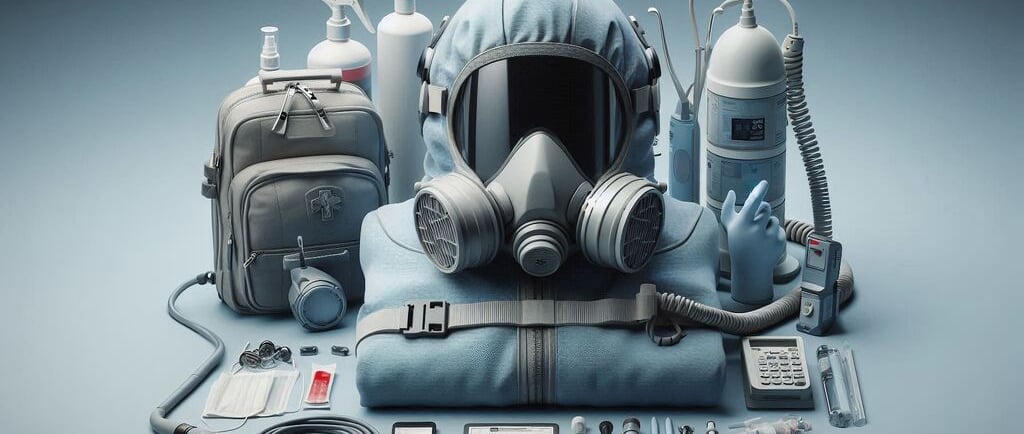Let us collaborate to foster global growth and development together.
Medical PPE & Safety Equipment
Discover essential information about medical PPE & safety equipment, their uses, and how they protect healthcare professionals. Stay safe and informed.
11/16/20073 min read


Discover essential information about medical PPE & safety equipment, their uses, and how they protect healthcare professionals. Stay safe and informed.
Medical PPE & Safety Equipment: Your Ultimate Guide to Protection
In healthcare, safety isn’t just a priority—it’s a necessity. For professionals working on the front lines, medical PPE (personal protective equipment) and safety equipment are lifesaving barriers against hazards like infectious diseases, harmful chemicals, and workplace accidents.
But what exactly does medical PPE encompass? How do you choose the right equipment for your needs? And why is it vital in maintaining safety standards? Let’s explore these questions and more in this detailed guide on medical PPE & safety equipment.
Why Medical PPE Matters
Shielding Against Health Risks
Healthcare environments pose numerous risks, from contagious diseases to exposure to hazardous materials. Medical PPE acts as the first line of defense, protecting wearers from potential harm and ensuring they can carry out their work safely.
Key items: Masks, gloves, gowns, and eye protection are just a few examples of critical PPE used to create a safety barrier.
Example in action: During the COVID-19 pandemic, proper mask usage significantly reduced transmission rates among healthcare workers.
Compliance with Safety Standards
Wearing PPE isn’t just about individual safety; it’s about adhering to health regulations and protecting others. Hospitals, clinics, and laboratories follow strict safety protocols that often mandate specific PPE to minimize risks.
Essential Medical PPE: What Every Healthcare Worker Needs
1. Masks and Respirators
Face masks, such as surgical masks, protect wearers from large respiratory droplets. For higher-risk settings, N95 respirators or equivalents provide advanced filtration against airborne particles.
Tip: Always check the fit of N95 masks to ensure maximum protection.
Fun Fact: The "95" in N95 represents its ability to filter 95% of airborne particles.
2. Gloves
Medical-grade gloves, often made from latex, nitrile, or vinyl, are essential for preventing contamination during patient interactions or laboratory work.
When to use: Nitrile gloves are great for handling chemicals, while latex is suitable for general medical procedures.
Pro Tip: Opt for powder-free gloves to avoid allergies or skin irritation.
3. Gowns and Protective Suits
These act as full-body shields, preventing direct contact with infectious materials. Reusable gowns and disposable coveralls cater to different operational needs.
Usage: Common in surgery, isolation units, and hazardous material handling.
4. Eye and Face Protection
Goggles or face shields protect the eyes and face from splashes, sprays, and droplets. These are indispensable for dental care and emergency response teams.
5. Footwear Covers
Slip-resistant and fluid-proof, shoe covers help maintain a sterile environment in operating rooms and labs.
How to Choose the Right Medical PPE
Assess the Risk Level
Different tasks call for different PPE. A healthcare worker performing surgery requires sterile gloves and gowns, while a lab technician handling chemicals might prioritize goggles and nitrile gloves.
Prioritize Comfort and Fit
Uncomfortable PPE leads to poor compliance. Look for ergonomic designs and breathable materials, especially when selecting masks and protective clothing for extended wear.
Example: A poorly fitted N95 mask reduces protection and may feel stifling.
Look for Certified Products
Always choose products that meet international safety standards like FDA, CE, or ISO certifications.
Maintenance and Proper Usage of PPE
Follow Proper Donning and Doffing Procedures
Incorrectly removing PPE can cause contamination. Ensure you follow step-by-step procedures to minimize contact with exposed surfaces.
Key reminder: Dispose of single-use items immediately after use, and disinfect reusable equipment thoroughly.
Regular Inspections
Check for wear and tear in reusable PPE. Small damages like punctures or loose fittings can compromise protection.
Innovations in Medical PPE
The world of medical PPE is evolving with advancements in technology:
Self-Sterilizing Materials: Some PPE items now feature antimicrobial coatings, reducing the need for frequent replacements.
Sustainable Options: Eco-friendly PPE, such as biodegradable gowns and reusable masks, are becoming popular for minimizing environmental impact.
Benefits of Proper PPE Use
Safety Assurance: Protect yourself and your patients effectively.
Enhanced Productivity: Confidence in safety allows workers to focus on their duties.
Regulation Compliance: Avoid fines and penalties by following guidelines.
Final Thoughts: Prioritizing Safety Through Medical PPE
The importance of medical PPE & safety equipment cannot be overstated. It’s the cornerstone of healthcare safety, providing essential protection against diverse risks. Whether you’re a healthcare worker, lab technician, or someone researching how to stay safe, understanding the tools that safeguard you is crucial.
Want to explore more about enhancing healthcare safety or tips on choosing the best medical tools? Check out Top Trends in Healthcare Innovation or leave a comment below with your questions—we’re here to help you stay informed and protected.
Innovation
Cutting-edge solutions for industrial efficiency and productivity.
© 2024. All rights reserved.


